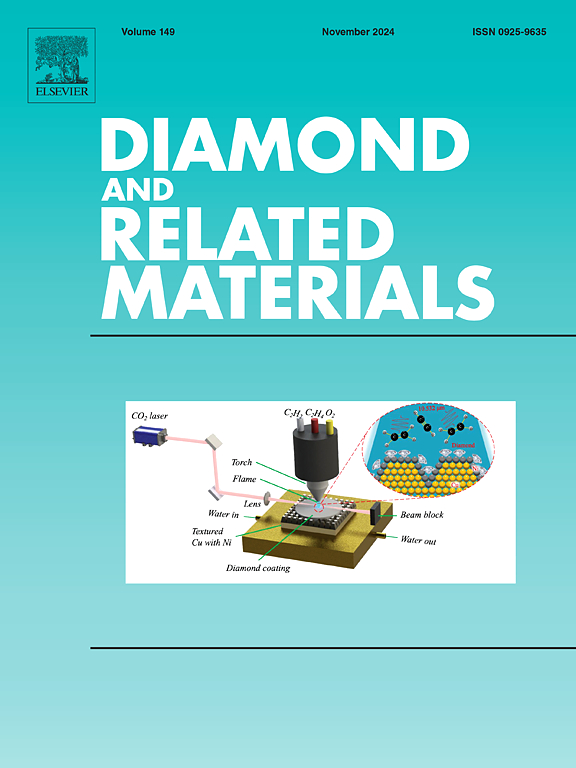N-doped hierarchically porous carbon from lignite-derived residue for high-performance supercapacitor
IF 4.3
3区 材料科学
Q2 MATERIALS SCIENCE, COATINGS & FILMS
引用次数: 0
Abstract
Lignite-derived residue with cross-linked aromatic structure and heteroatom groups is an alternative and low-cost precursor for porous carbon. Herein, N-doped hierarchically porous carbon (NDHPC) was prepared by KOH activation from lignite-derived residue using ZnO as the template and dicyandiamide as the nitrogen source. The optimal NDHPC presents hierarchically porous stacked layered structure with high specific surface area (2648.18 m2/g) and contains abundant O/N functional groups, making it promising candidate as the electrode material. Introducing nitrogen can provide more pseudocapacitors and meanwhile improve the wettability of the NDHPC, thus enhancing electrochemical performance. The optimal NDHPC exhibits a high specific capacitance of 336 F g−1 at the current density of 0.5 A g−1 with good rate performance. Additionally, the assembled NDHPC symmetrical supercapacitor presents outstanding cycle stability with 96.2 % capacitance retention and possesses energy density of 7.85 Wh kg−1 at power density of 250 W kg−1. This study offers an effective and low-cost approach to fully utilize the organic matter in coal-derived residue for preparing supercapacitor electrode materials.

用于高性能超级电容器的掺杂 N 的褐煤渣分层多孔碳
具有交联芳香结构和杂原子团的褐煤残渣是多孔碳的一种替代性低成本前体。本文以 ZnO 为模板,以双氰胺为氮源,通过 KOH 活化褐煤残渣制备了掺氮分层多孔碳(NDHPC)。最佳的 NDHPC 呈多孔叠层结构,具有高比表面积(2648.18 m2/g),并含有丰富的 O/N 官能团,因此有望成为电极材料的候选材料。引入氮能提供更多的伪电容器,同时改善 NDHPC 的润湿性,从而提高电化学性能。最佳的 NDHPC 在电流密度为 0.5 A g-1 时具有 336 F g-1 的高比电容和良好的速率性能。此外,组装好的 NDHPC 对称超级电容器具有出色的循环稳定性,电容保持率达 96.2%,在功率密度为 250 W kg-1 时,能量密度为 7.85 Wh kg-1。这项研究为充分利用煤渣中的有机物制备超级电容器电极材料提供了一种有效且低成本的方法。
本文章由计算机程序翻译,如有差异,请以英文原文为准。
求助全文
约1分钟内获得全文
求助全文
来源期刊

Diamond and Related Materials
工程技术-材料科学:综合
CiteScore
6.00
自引率
14.60%
发文量
702
审稿时长
2.1 months
期刊介绍:
DRM is a leading international journal that publishes new fundamental and applied research on all forms of diamond, the integration of diamond with other advanced materials and development of technologies exploiting diamond. The synthesis, characterization and processing of single crystal diamond, polycrystalline films, nanodiamond powders and heterostructures with other advanced materials are encouraged topics for technical and review articles. In addition to diamond, the journal publishes manuscripts on the synthesis, characterization and application of other related materials including diamond-like carbons, carbon nanotubes, graphene, and boron and carbon nitrides. Articles are sought on the chemical functionalization of diamond and related materials as well as their use in electrochemistry, energy storage and conversion, chemical and biological sensing, imaging, thermal management, photonic and quantum applications, electron emission and electronic devices.
The International Conference on Diamond and Carbon Materials has evolved into the largest and most well attended forum in the field of diamond, providing a forum to showcase the latest results in the science and technology of diamond and other carbon materials such as carbon nanotubes, graphene, and diamond-like carbon. Run annually in association with Diamond and Related Materials the conference provides junior and established researchers the opportunity to exchange the latest results ranging from fundamental physical and chemical concepts to applied research focusing on the next generation carbon-based devices.
 求助内容:
求助内容: 应助结果提醒方式:
应助结果提醒方式:


